They call it The Glen of Tears.
Located in a treeless valley, steep cliffs on either side, its rugged beauty belies a historical incident of such treachery its infamy lives on, 325 years later.
We were in the midst of a long day of travel. Starting in Glasgow, we’d already made a stop for a cruise on Loch Lomond, and headed north into the highlands. As we drove the 50 miles to Glen Coe the topography changed, from tree filled and lush to a near treeless, almost tundra-like landscape.
(Click on photos for a larger view)
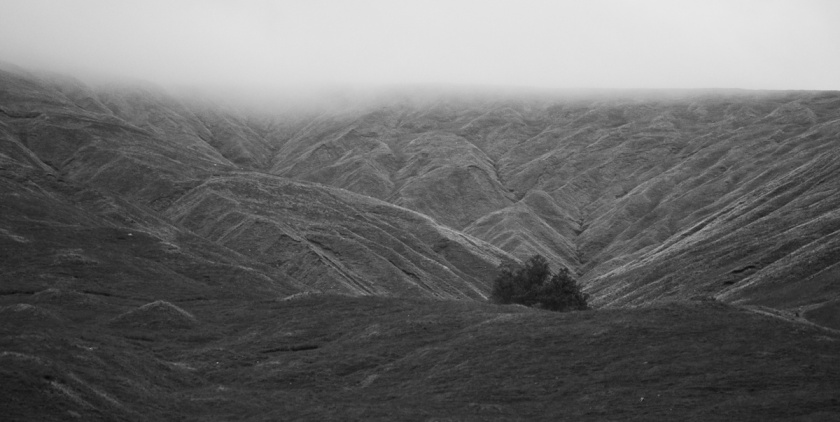
Folks in the United States have probably heard of a feud between the Hatfields and the McCoys.
Posers.
In Scotland, it’s not a feud unless it lasts a few hundred years. Enter the MacDonalds and the Campbells.
Both families came into prominence in the 12 and 13 hundreds, in part for supporting Robert the Bruce in his campaign to become King of Scotland. They played nice for many generations; it wasn’t until 1501 that things got testy.
The Campbells had the land to the southwest of Glen Coe, with a name you may know better for footwear.
Argyll (socks).
The testiness was not over fashion; we will grant that both the MacDonalds and the Campbells wandered about in tartan sartorial splendor, albeit a bit drafty above the knees.
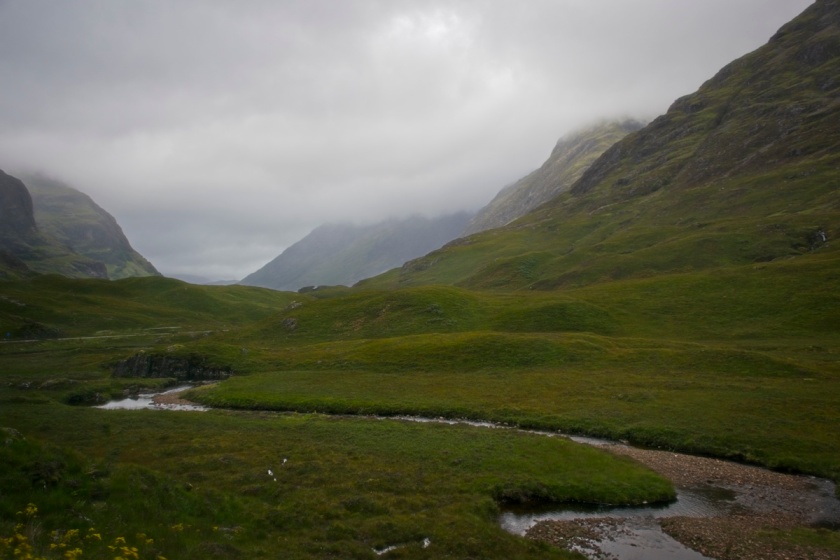
Their disagreements were a tad more, well, disagreeable. The MacDonalds weren’t the most law-abiding types; they were continually rustling cattle from the Campbells. The Campbells on the other hand didn’t stop at cattle; they were trying to extend their lands at the MacDonalds expense. This bad behavior went on for generations.
They did take different approaches to their larceny. The MacDonalds were free spirits that made free with other folk’s property. The Campbells were political players; they made nice with the English government and used armed force.
This all came to a head in 1691.
If you recall from the Loch Lomond post, in 1688 the Scottish King James II was deposed by the English parliament and William III of Orange. King Bill III was interested in making peace with the Scots without showing weakness. On August 27th, 1691, he offered a pardon to all Scots who swore an oath of allegiance before a magistrate by January 1st, 1692. The alternative? Death.
I read a couple of sources to learn what happened next, but there was so much intrigue and so many players doing their little shenanigans my eyes glazed over. The upshot was the MacDonald clan chief went to the wrong location to swear his reluctant allegiance, and by the time he got to the right place it was January 6th. But Chief MacDonald figured his clan was ok, he’d sworn the oath and had a letter showing he had tried to do so by the 1st.
The English crown (and maybe a few other players) didn’t care. They already had a military force in place and wanted to make an example of how they’d deal with resistance.
Although the Campbells and MacDonalds were frequently thorns in each other’s sides, they were still neighbors and they’d still help each other out. In this case, one of the Campbells (who happened to hold a grudge) asked for temporary quarters for his troop of 130 solders in the MacDonald compound.
After hanging out and playing friendly neighbors for 10 days, Campbell got the order: exterminate the MacDonalds. Early the next morning the Campbell troop (of which only a few were actually named Campbell) did the dirty deed. 38 were killed directly. That many more escaped, but died from exposure. (This is northern Scotland in January.) A few MacDonalds survived, but the clan lost its importance.
As massacres go, this wasn’t a big one. In 1069-1070 William the Conqueror killed 100,000. And a scan of just Campbell history suggests internecine warfare in the middle ages was the norm. What made this one notorious was the treachery; the maneuvering to set up the MacDonalds, the make like friends for 10 days, the follow up with sword and gun. It was a black day.
Fortunately for us, it was only a grey day. The views were not murderous, they were sublime. After enjoying the views we moved on to Fort William.
These days Fort Williams is mostly a tourist town, a jumping off site for hiking the glen, for climbing nearby Ben Nevis (the highest mountain in Great Britain), and for mountain biking. We stopped for a late lunch, and took in a surprisingly good small museum, with exhibits ranging from natural history to military history.
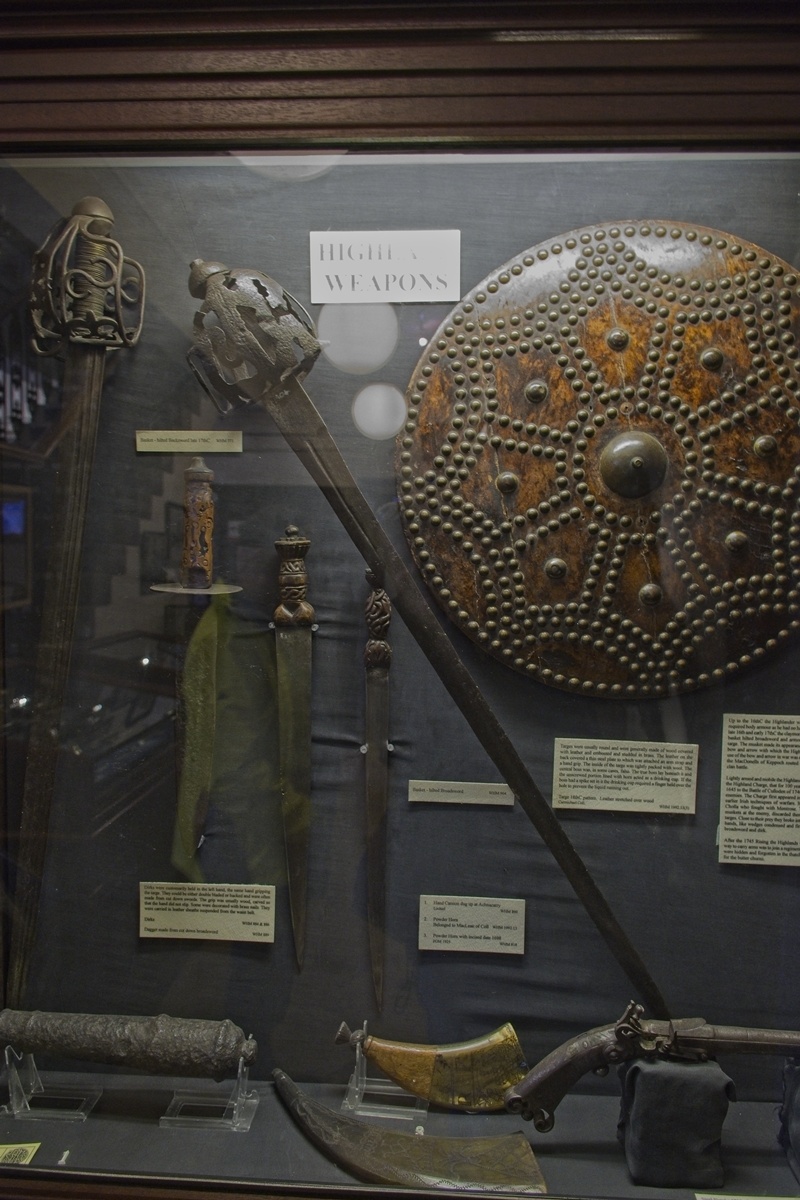

After lunch, we strolled about the town and I came upon a good-natured fellow who seemed to be the only guy in Scotland who’d sit still for my opinions. Although frankly, in time even he seemed to give me the cold shoulder.
But time was a-wasting, we had miles to go. Next up: Glenfinnan.
I admit, I was looking forward to Glenfinnan. Do you remember the Harry Potter movie where the flying car came upon the train to Hogwarts passing over a viaduct? Or the loch that appeared in a couple of the movies? This was the view I was expecting to see.

What actually happened? We pulled into a tourist stop not far from the loch but without the loch view, and the guide walked us 50 yards to a place we could see the viaduct from ground level, 1/4 mile off. My picture was so unimpressive it didn’t even make the first culling pass after I got home – it got deleted. It was rush, rush, rush; we were only making a bathroom stop and had no time for a better perspective.
I did at least get a picture of the monument, a statue in honor of the Jacobite rebels who died trying to restore Bonnie Prince Charlie to the throne in 1745. It was at the mouth of the loch that Charlie Stuart raised his banner, in a last attempt to rally the Scots to restore the Stuarts to the throne. If you look in the picture above, you can see a tiny spike outlined in the water, just in front of the island. That’s the monument.
In case that little spike underwhelms you as much as the view underwhelmed me when we arrived at the site, here’s that better picture of the monument I took.
And on we went. Back up into the highlands, back above the trees, back into the land of rugged turf and rocks.
Even this wasn’t the end of the drive. We drove on to the coast, and when we couldn’t drive anymore we got on a ferry. The next stop, Isle of Skye.
But that’s a story for another post.


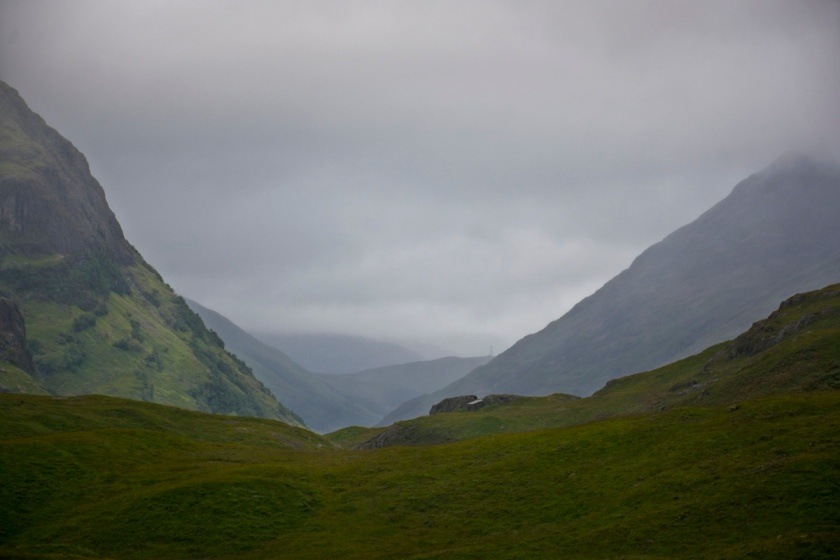
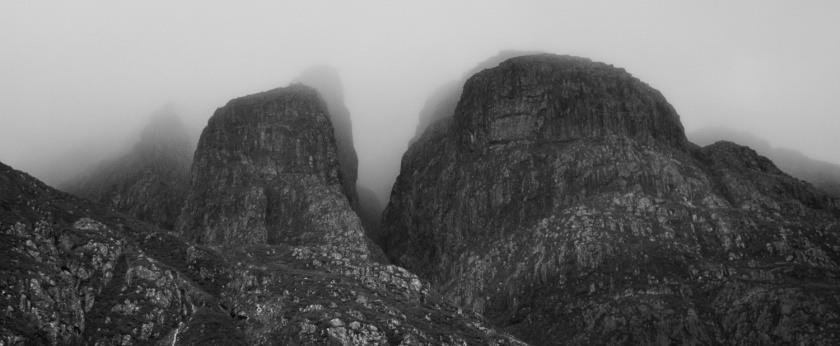
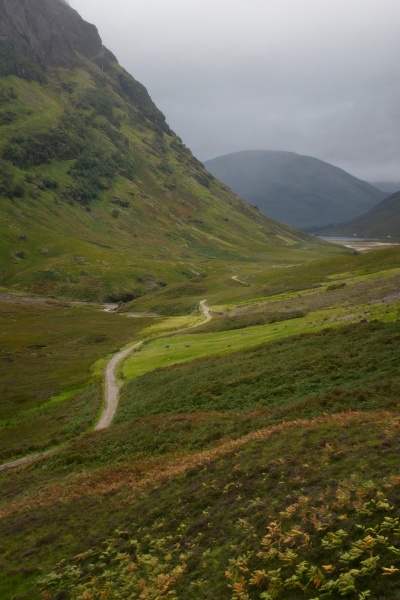

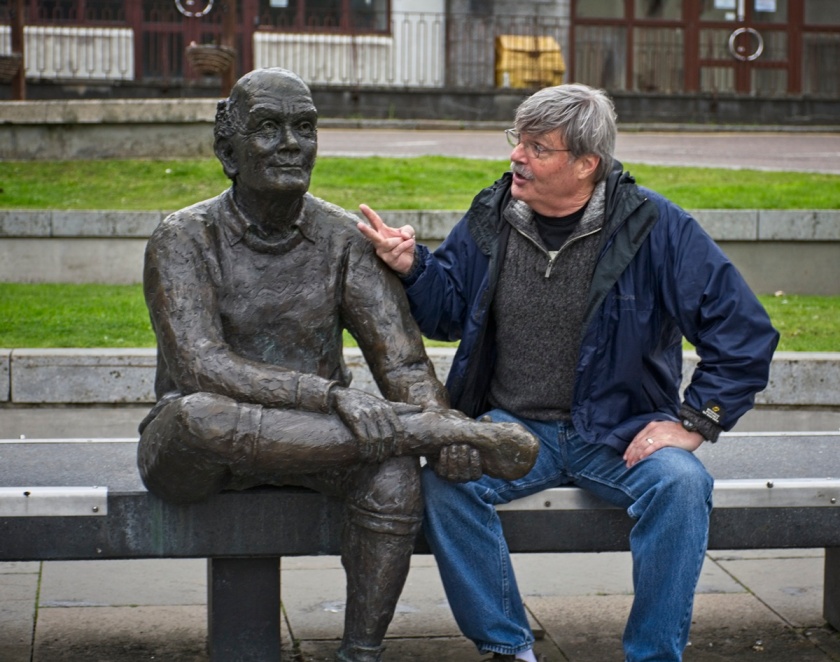
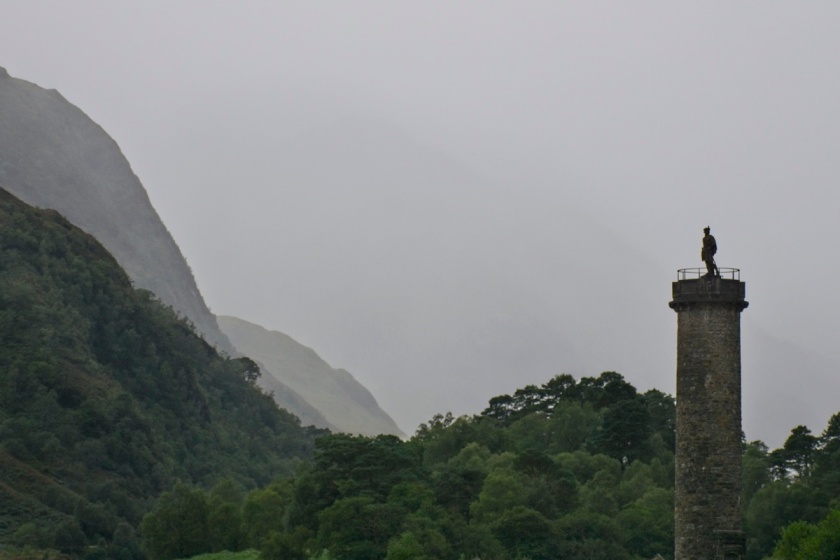

The highlands are so beautiful. I was there in 1977 and have wanted to go back. Hopefully that will occur within the next year or two. See you!
Neil Scheinin
LikeLiked by 1 person
Sounds like you’re way overdue. It was my first time back since 1980 and I’m glad we made it.
LikeLiked by 1 person
I certainly recognise that weather! Some 25 years ago or so I walked across Scotland, wild camping on the way, ending up at the ferry for Skye. Wet, cold, but absolutely fantastic rugged scenery. And that was in June. I can perfectly understand how the January climate would kill off the fugitives.
LikeLiked by 1 person
That’s probably the best way to see it, if you can handle the weather. I imagine that’s one of those memories that are indelible.
LikeLiked by 1 person
Indelible, although the weather tried hard to wash it out!
LikeLiked by 1 person
Beautiful photos but photo from Glenfinnan Monument and Visitor Center is outstanding. Looks like a painting.
LikeLiked by 1 person
Yeah, that’s why I was so disappointed when I didn’t see that view and had to borrow the picture. Maybe I was just sitting on the wrong side of the bus and it passed in an instant.
LikeLiked by 1 person
Thank you, Dave, for the wonderful photos of a country that impresses me with its stark beauty! The gruesome story you were telling about the massacre fits somehow well into the sombre landscape. Have a great day!
LikeLiked by 1 person
Thanks, Peter. I wasn’t (and still am not) too sure how well telling a story of a massacre would fly in popularity, but it is a part of the area’s history. I think I read somewhere the Game of Throne’s Red Wedding scene was inspired by that massacre. In any case, stark beauty describes it well.
LikeLiked by 1 person
Wonderful pictures, Dave! Amazing scenery. Other than the Jacobite on his watchtower, I don’t think there’s a single figure, or so much as a sheep, in these places, almost spooky in a great way. And who was that character you were talking to? He looks long-suffering, but maybe if his foot wasn’t bothering him, he might have taken off the Argyll socks and made a run for it.
LikeLiked by 2 people
I generally don’t include people in my landscape photos, but in this case the lack makes it seem even more remote and lonely. That’s one reason I went ahead and featured a mournful story – it seemed to fit the mood.
I suspect if every third tourist who came to town sat down next to you and expressed their opinion you’d look long-suffering too! 😉
LikeLiked by 1 person
Such a beautiful place with such a sad history.
LikeLiked by 1 person
That’s true. I imagine there’s some jolly history associated with the place too, but that doesn’t seem to be the stuff that makes the history books. Kind of like the evening news – they seem to focus on the bad things, especially for the lede.
LikeLiked by 1 person
Beautiful landscapes, full of that northern moodiness. I wonder how much the geography contributed to all that disagreeableness….
LikeLiked by 2 people
I suspect that back in those days, once you got past the needs of survival there wasn’t a lot to keep yourself entertained. Maybe the local lords and clan chiefs waged wars and power plays not just to try and increase their power, but for something to do. Idle hands, and all that…
LikeLike
I don’t think so….people are plenty busy these days, and still make lots of trouble! 😉
LikeLiked by 1 person
I can’t believe how beautiful the Highlands are! Is it too cold to go there in the Fall and Spring? Their history may be depressing, but the views are inspiring!
LikeLiked by 2 people
I don’t really know how the climate varies over the year. We were there in August and needed sweaters and light jackets, but it was a cool, rainy day. The latitude is roughly equivalent to Juneau, Alaska.
LikeLiked by 1 person
Yes, I’m guessing summer is the best time to go, and even then I would dress a little warmly. But boy, do I hope I get there someday!
LikeLiked by 1 person
More fabulous pictures! I loved the one with the statue – I took a very similar one with a Lincoln statue at Gettysburg.
LikeLiked by 2 people
One of these years I need to do some touring in the good old USA – I’ve never been to Gettysburg, or really anywhere else on the east coast.
LikeLiked by 1 person
Ooooh I’ve been to Gettysburg. You would like it I think. It’s a very neat place. I hope you might enjoy these photos: https://mb-henry.com/photography/gettysburgphotos/
LikeLiked by 1 person
Reading too fast today to properly absorb the whole feud story, but WOW – those mossy green valleys! Worth the trip (and the read) just for them.
LikeLiked by 2 people
This valley seems like the quintessential version of the highlands. They didn’t all have the green, sometimes they were more yellow or even into the oranges, but still worth seeing.
LikeLiked by 1 person
Your pictures are stunning. I’ve always wanted to visit Scotland and this post just makes me want to pack my bags and take the next flight out.
LikeLiked by 2 people
Isn’t that always the problem? So many cool places to see, but not enough time and money to seem ’em all.
LikeLiked by 1 person
Yes, I hope we all get the time and money to see as much as we can…😊
LikeLiked by 1 person
Well…finally a photo of you, and one that captures your personality so well. The Campbells. They also had a feud with Clan Douglas, so I’ve been told. Douglas is my maiden name. A Campbell made my life hell in high school. So, I automatically side with the MacDonalds.
LikeLiked by 2 people
I did get the impression that historically the Campbells got into a lot of fights – I think they were power hungry. One of my dive buddies is named Campbell, and after returning from a trip to Scotland he mentioned with some chagrin that the Campbells didn’t have the best reputation. I wonder how much of that comes from siding with the English. I’m not sure I can pick a side. If I dig deep enough and wide enough in the family tree I find both McDonalds and Campbells, and Douglas too.
LikeLike
Photo no. 1 is INCREDIBLE.
And on that bench it feels like you were trying to convince bronze chappie of the fact that two central midfielders are better than one!
LikeLiked by 1 person
I assume you’re talking about the mountain peaks in clouds. That one evolved a bit, I cropped it in to key on the gaps and fog, and went with B/W since it was nearly monochrome anyway. Definitely made for a moody shot.
I must have been talking about two of something. Maybe not midfielders, as I’m clueless about soccer (or cricket?).
LikeLiked by 1 person
Indeed football! 🙂
LikeLiked by 1 person
Tales well told, Dave, time well spent reading this and marveling at your photographs.
LikeLiked by 1 person
Thanks, Michael, much appreciated.
LikeLiked by 1 person
nice, brings back memories
LikeLiked by 1 person
“When only a few of us are left, we will feel an irresistible pull towards a far away land, to fight for The Prize.”
I wish you many a Quickening, Dave.
LikeLiked by 1 person
There can be only one.
Looks like you’ve done a bit of reading, Hook. Thanks for stopping by. 🙂
LikeLike
Stunning photographs. Hard to believe any view would have been disappointing there, but then you were on a bus, so…
As for your conversation, tell the truth. You were trying to sell him something. I can tell.
LikeLiked by 1 person
If there’s anything that trip proved, it’s that it’s possible to take good pictures through a bus window. At least that’s what I was trying to tell that Scot. 😉
LikeLiked by 1 person
Those landscapes look gorgeous! I’m going to repeat my earlier comment and say how similar it looks to Jeju, Iceland, and even certain parts of Mongolia. I particularly liked the blur effect you used on the black, jagged mountain ridge. Or was it fog? Your photography keeps getting better! 🙂
LikeLiked by 1 person
The foggy look is clouds, shrouding the tops of the ridge. I zoomed in to get closer, and cropped in to get to the heart of the matter. Strange how it’s not the clear blue sky days that make the best photos.
LikeLiked by 1 person